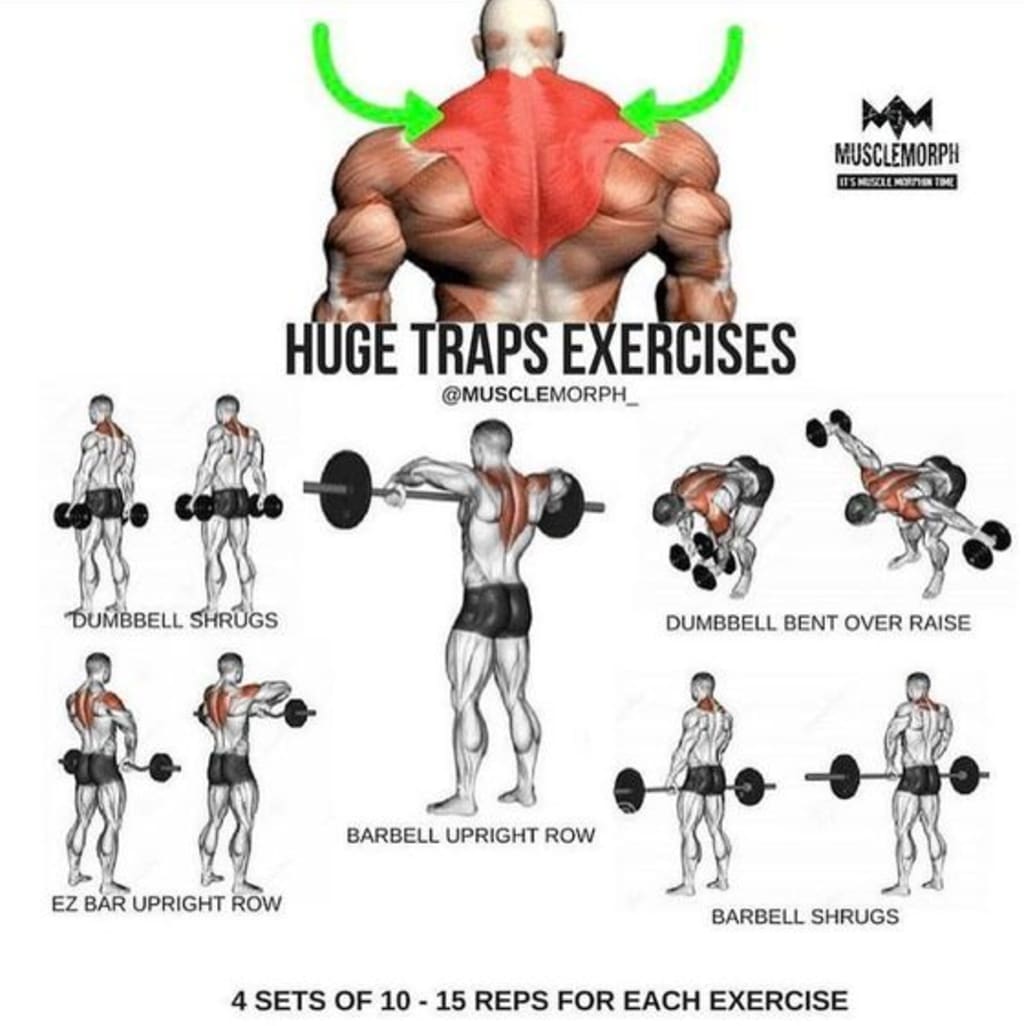How to Gain Muscle: Tips, Diet, and Workout Design
How to Build Muscle Strength: A Complete Guide

### How to Gain Muscle: Tips, Diet, and Workout Design
Building muscle is a journey that combines strategic planning, consistent effort, and smart choices. Whether you're a beginner stepping into the gym for the first time or an experienced lifter looking to break through a plateau, understanding the fundamentals of muscle gain is crucial. This guide will walk you through essential tips, dietary guidelines, and effective workout design to help you achieve your muscle-building goals.
---
## Tips for Gaining Muscle
1. **Set Clear Goals**:
Establishing specific, measurable, attainable, relevant, and time-bound (SMART) goals provides direction and motivation. Instead of a vague aim like "I want to get bigger," set a goal such as "I want to gain 10 pounds of muscle in 6 months."
2. **Prioritize Progressive Overload**:
Progressive overload is the cornerstone of muscle growth. This means gradually increasing the weight, reps, or intensity of your workouts to continuously challenge your muscles. Track your progress and ensure you're consistently pushing your limits.
3. **Focus on Compound Movements**:
Exercises like squats, deadlifts, bench presses, and rows engage multiple muscle groups simultaneously, providing a more efficient way to build strength and mass. Incorporate these foundational lifts into your routine.
4. **Maintain Proper Form**:
Proper technique not only maximizes muscle activation but also reduces the risk of injury. Before adding weight, ensure you're performing exercises with correct form. Consider working with a trainer or using video analysis to perfect your technique.
5. **Incorporate Rest and Recovery**:
Muscles grow during rest, not while you're lifting. Aim for at least 48 hours of rest between workouts for the same muscle group. Additionally, ensure you're getting adequate sleep, as it plays a critical role in muscle recovery and growth.
6. **Stay Consistent**:
Consistency trumps perfection. Stick to your workout routine and dietary plan, and be patient. Muscle building is a gradual process, and staying committed over the long term yields the best results.
## Diet for Muscle Gain
1. **Caloric Surplus**:
To gain muscle, you need to consume more calories than you burn. This surplus provides the energy needed for muscle repair and growth. Aim for a surplus of 250-500 calories per day, adjusting based on your progress.
2. **High-Quality Protein Intake**:
Protein is the building block of muscle. Aim for 1.6 to 2.2 grams of protein per kilogram of body weight daily. Sources include lean meats, fish, eggs, dairy, and plant-based options like beans, lentils, and tofu.
3. **Balanced Macronutrients**:
While protein is crucial, don't neglect carbohydrates and fats. Carbs fuel your workouts and aid in recovery, while healthy fats support hormone production and overall health. A balanced macronutrient ratio might look like 40% carbs, 30% protein, and 30% fat.
4. **Frequent Meals**:
Eating smaller, more frequent meals can help maintain a steady flow of nutrients to your muscles and support consistent energy levels. Aim for 4-6 meals per day, incorporating protein in each meal.
5. **Stay Hydrated**:
Muscle tissue is around 75% water. Hydration is vital for muscle function and recovery. Aim for at least 3 liters of water per day, more if you're engaging in intense workouts or live in a hot climate.
6. **Supplement Wisely**:
Supplements can support your muscle-building efforts but aren't a substitute for a solid diet. Consider whey protein for convenient protein intake, creatine for strength and muscle gains, and branched-chain amino acids (BCAAs) for enhanced recovery.
## Designing an Effective Workout Plan
1. **Split Routine**:
Divide your workouts to focus on different muscle groups on different days (e.g., push/pull/legs or upper/lower body splits). This allows for more intense focus on each muscle group and adequate recovery time.
2. **Volume and Intensity**:
Balance the volume (total sets and reps) and intensity (weight lifted). Start with a moderate volume (3-4 sets of 8-12 reps) and increase the intensity gradually. Periodically change up your routine to prevent plateaus.
3. **Incorporate Variety**:
Avoid monotony by incorporating different exercises, equipment, and training techniques (like supersets, drop sets, and tempo changes). This keeps your workouts engaging and challenges your muscles in new ways.
4. **Warm-Up and Cool Down**:
A proper warm-up prepares your muscles and joints for the workout ahead, reducing the risk of injury. Cooling down with stretches and light activities helps transition your body back to a resting state and aids in recovery.
5. **Track Your Progress**:
Keep a workout log to monitor your lifts, reps, and sets. Tracking your progress helps identify what's working, where you're improving, and areas that may need adjustment.
6. **Listen to Your Body**:
Pay attention to how your body feels. If you're overly fatigued or experiencing pain, it might be a sign you need more rest or a change in your routine. Balancing pushing your limits and respecting your body's signals is key to sustainable progress.
---
### Conclusion
Gaining muscle requires a combination of disciplined training, strategic eating, and allowing time for recovery. Embrace the journey, celebrate your progress, and stay committed to your goals. With the right approach, you'll see impressive gains and build a stronger, healthier body.
### How to Build Muscle Strength: A Complete Guide
Building muscle strength goes beyond just lifting heavier weights. It’s about understanding the fundamentals of resistance training, optimizing your diet for performance, and adopting a lifestyle that supports your goals. Whether you're aiming to enhance athletic performance, improve daily functional strength, or sculpt a powerful physique, this guide provides a comprehensive approach to developing muscle strength effectively and sustainably.
---
## Understanding Muscle Strength
Muscle strength is the ability of a muscle or group of muscles to exert force against resistance. Unlike muscle endurance, which focuses on sustaining repeated contractions over time, strength training emphasizes maximum force output in a single effort or a few repetitions. Building strength involves both neural adaptations (improving how your brain and muscles communicate) and hypertrophic adaptations (increasing muscle size).
---
## Core Principles of Strength Training
1. **Progressive Overload**:
This foundational principle involves gradually increasing the resistance or load your muscles handle. Whether through heavier weights, more reps, or increased workout intensity, progressive overload ensures continuous strength gains.
2. **Compound Movements**:
Exercises that engage multiple joints and muscle groups (like squats, deadlifts, and bench presses) are essential. They mimic real-life movements, recruit more muscle fibers, and allow you to lift heavier weights compared to isolation exercises.
3. **Low Reps, High Weight**:
Strength training typically involves lifting heavy weights for fewer repetitions (1-6 reps per set). This approach maximizes force production and develops neural efficiency, enhancing your ability to lift heavy loads.
4. **Adequate Rest Between Sets**:
To lift heavy and promote strength gains, longer rest periods (2-5 minutes) between sets are recommended. This allows for sufficient recovery of the nervous system and muscle fibers, enabling you to maintain intensity across sets.
5. **Proper Form and Technique**:
Lifting with correct form is crucial to maximize strength gains and prevent injuries. Focus on maintaining proper alignment and controlled movements. Seek guidance from experienced trainers or use resources like video tutorials to perfect your technique.
---
## Structuring a Strength Training Program
1. **Frequency and Split**:
Training frequency depends on your experience and goals. Beginners may start with 3 full-body workouts per week, while advanced lifters might adopt a split routine (e.g., upper/lower body) training 4-5 times a week. Ensure each muscle group gets adequate recovery time.
2. **Intensity and Volume**:
Strength workouts emphasize low to moderate volume with high intensity. A typical session might include 3-5 sets per exercise with 1-6 reps per set. Adjust the load to ensure you're lifting at near-maximal effort.
3. **Exercise Selection**:
Prioritize compound lifts like squats, deadlifts, bench presses, overhead presses, and rows. Complement these with accessory exercises (e.g., lunges, pull-ups, and dips) to address muscle imbalances and support overall strength development.
4. **Periodization**:
Plan your training cycles to include phases of varying intensity and volume. For example, a strength cycle might involve 4 weeks of high-intensity, low-rep work followed by a deload week with lighter weights and higher reps to allow for recovery and adaptation.
5. **Warm-Up and Mobility Work**:
Begin each session with a dynamic warm-up to increase blood flow and prepare your muscles for lifting. Incorporate mobility exercises to improve joint range of motion and reduce the risk of injury.
---
## Nutrition for Strength Building
1. **Caloric Intake**:
Strength training demands energy. Ensure you're consuming enough calories to fuel your workouts and support recovery. Depending on your goals, you might need to be in a slight caloric surplus to gain muscle and strength.
2. **Protein**:
Protein is essential for muscle repair and growth. Aim for 1.6 to 2.2 grams of protein per kilogram of body weight daily. Spread your intake across meals to provide a steady supply of amino acids to your muscles.
3. **Carbohydrates**:
Carbs are your primary energy source for high-intensity strength training. They replenish glycogen stores in muscles, aiding performance and recovery. Include complex carbs like oats, brown rice, and sweet potatoes in your diet.
4. **Healthy Fats**:
Fats are crucial for hormone production, including testosterone, which plays a significant role in muscle growth. Incorporate sources of healthy fats like avocados, nuts, seeds, and olive oil into your meals.
5. **Hydration and Supplements**:
Stay hydrated to maintain performance and recovery. Consider supplements like creatine for enhanced strength and power output, and beta-alanine to reduce fatigue during intense lifting sessions.
---
## Lifestyle Factors for Optimal Strength Gains
1. **Sleep and Recovery**:
Muscle repair and growth predominantly occur during sleep. Aim for 7-9 hours of quality sleep per night. Incorporate rest days and active recovery sessions to allow your muscles and nervous system to recover fully.
2. **Stress Management**:
Chronic stress can hinder recovery and performance. Practice stress-relief techniques like meditation, yoga, or deep-breathing exercises to maintain a balanced and focused mindset.
3. **Consistency and Patience**:
Strength building is a long-term commitment. Stay consistent with your training and nutrition, and be patient with your progress. Celebrate small victories and stay motivated by tracking your improvements.Hyperbolic Stretching Review
4. **Mindset and Goals**:
Maintain a positive mindset and set achievable milestones. Surround yourself with a supportive community or a workout partner to stay motivated and accountable to your goals.
---
### Conclusion
Building muscle strength is a multifaceted journey that involves strategic training, proper nutrition, and a supportive lifestyle. By understanding and applying the principles outlined in this guide, you can develop a powerful, resilient body. Remember, the path to strength is not a sprint but a marathon. Stay dedicated, listen to your body, and enjoy the process of becoming stronger every day.
About the Creator
peter
Content about cars, motorbikes, technology, news
Enjoyed the story? Support the Creator.
Subscribe for free to receive all their stories in your feed. You could also pledge your support or give them a one-off tip, letting them know you appreciate their work.






Comments
There are no comments for this story
Be the first to respond and start the conversation.